Stinkhorn eggs, also known as witch eggs, are the edible, underground form of a stinkhorn mushroom. They're edible, but they have a strong flavor.
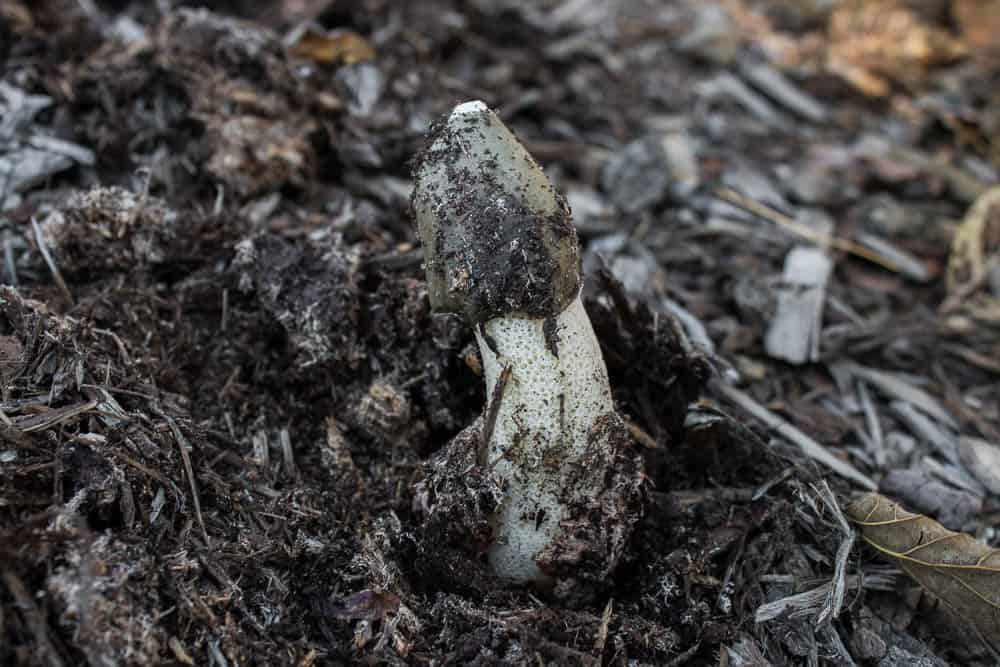
Stinkhorns smell, are covered in goo that attracts flies and just looking at them will make most people cringe, laugh, or feel revulsion. A quick google will show you the formations have an impressive range too: dog phallus, phallus in a cage, or even weird alien phallus.
Oh, and Phallus is actually they're proper Latin name. I know I'm indulging my inner five-year-old, but part of me always want to snicker when I see them. I didn't really think too much about eating them, but I knew that they did in China. My ignorance of them ended this year.
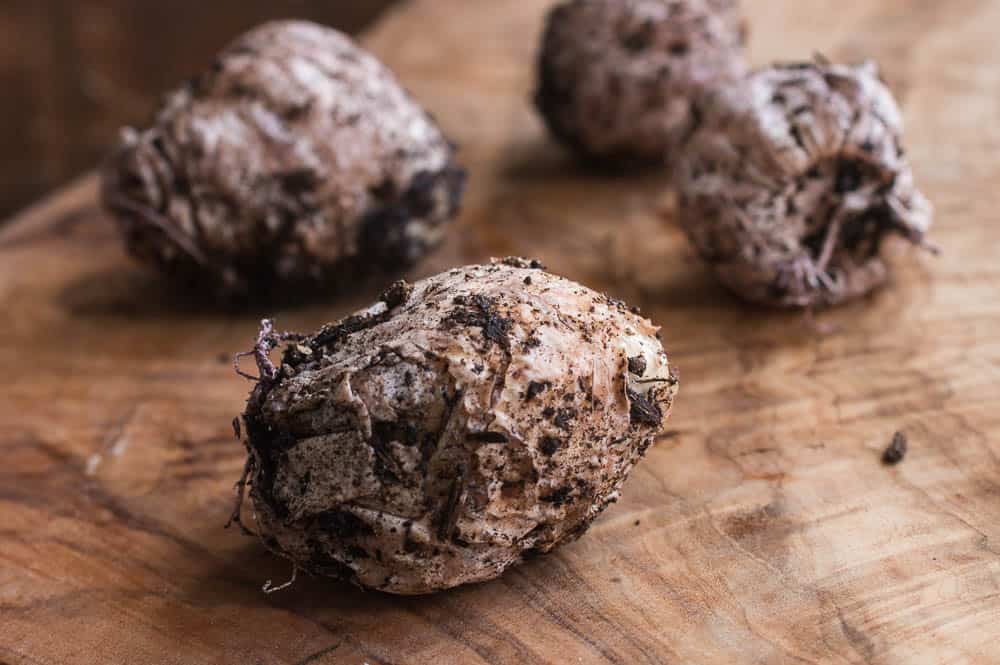
While we hunted some blewits this fall in some old landscaping chips, my friend Alex saw a stinkhorn growing. Instinctively, she started rummaging around to see if she could find some eggs.
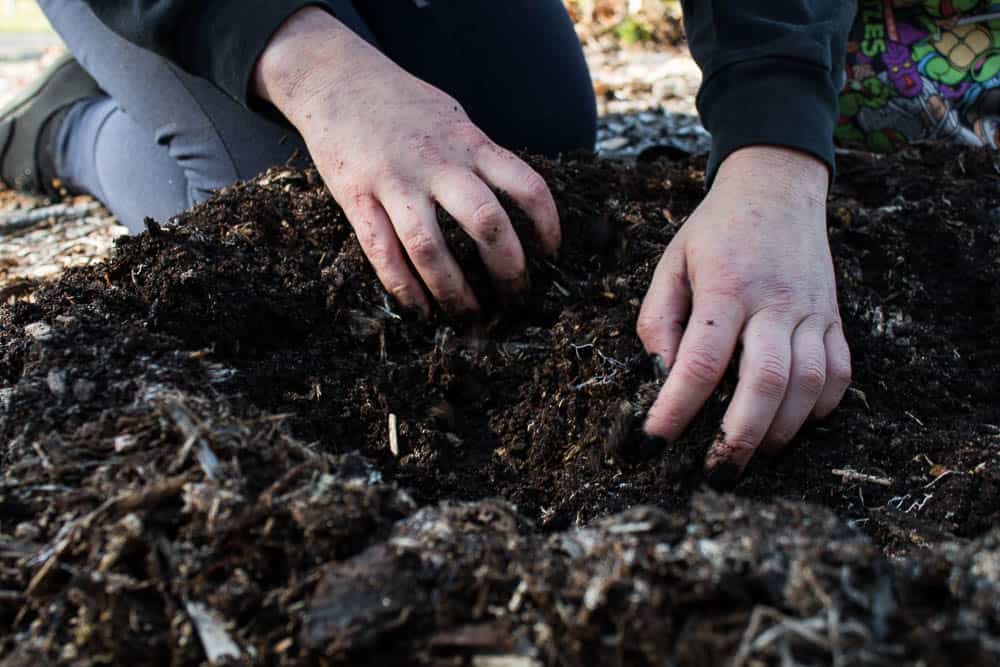
I'll be honest, I'd seen stinkhorns before plenty of times, but I never really put two and two together that underdeveloped ones would be very close to emerging, mature stinkhorns.
After a little digging and feeling around for lumps in the ground we had a bag of stinkhorn eggs, and I began to come to terms with the fact that I was probably going to end my day eating one.
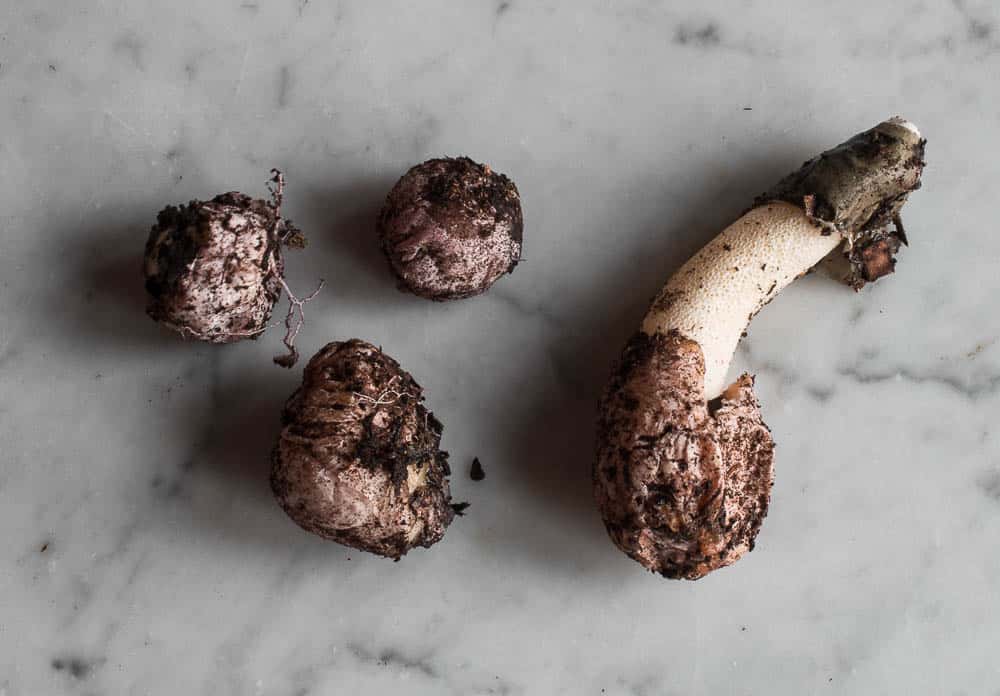
First, I made sure to know what I was eating. The biggest thing to rule out for safety's sake is amanita eggs, which you can do by cutting the eggs in half and looking at the shape of what's inside.
Stinkhorns are going to have a colored spore mass and a particular structure to them. Another key ID characteristic of the stinkhorns is that they're going to be covered in a sac, protecting the mushroom as well as having a viscous coating underneath it. The sac of my stinkhorns was pink, which leads me to assume that they were the species Phallus hadriani.
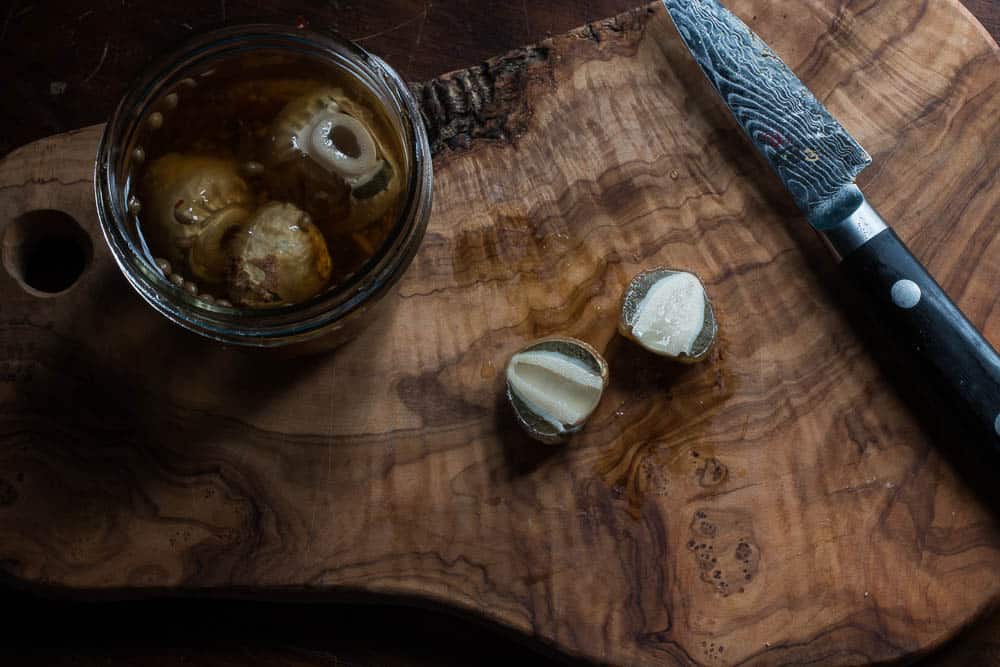
Are all species of stinkhorn eggs edible?
As far as different species of stinkhorns, they're all going to come from eggs, but does that mean all the eggs of stinkhorns are edible and you don't have to pay attention to particular species?
I can't find anything that definitively says they aren't, but for the sake of knowing what you're eating, it's always a good practice to key out or identify mushrooms as close to the exact species as you can, it's part of the fun. Just like with any other mushroom, eat small amounts first to test your tolerance for them before consuming larger portions.
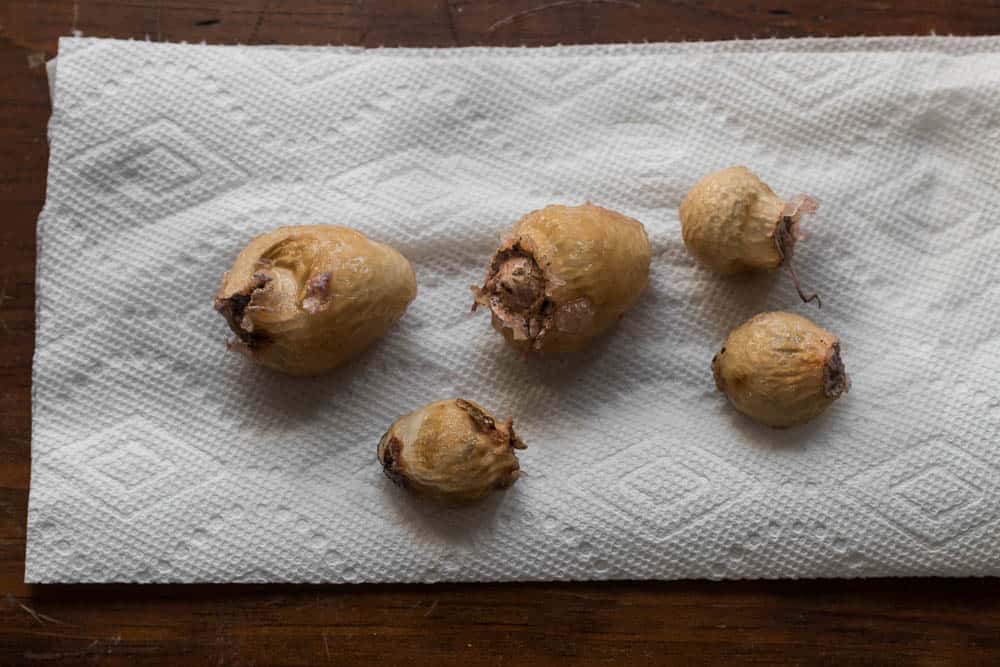
Another good piece of advice is to remember that just because you found it, and you can eat it, doesn't mean that you have to. It's nothing to collect new to you mushrooms, bring them home, spore print them, log their location and growing conditions in a journal and then throw them away.
The next year, go to the same place, collect them again, and repeat until you are comfortable with them until finding them is like seeing and old friend.
Ok, the big questions: how do they taste, and is there any reason on Earth to put a stinkhorn egg in my body?
The first question is easy enough to answer. The texture of stinkhorn eggs is not at all what I expected. I thought they might be tender after cooking like a mushroom.
They're texture is almost crunchy, similar to a water chestnut even after a hard sear in a cast iron pan. The texture was fine, interesting, but not unpleasant.
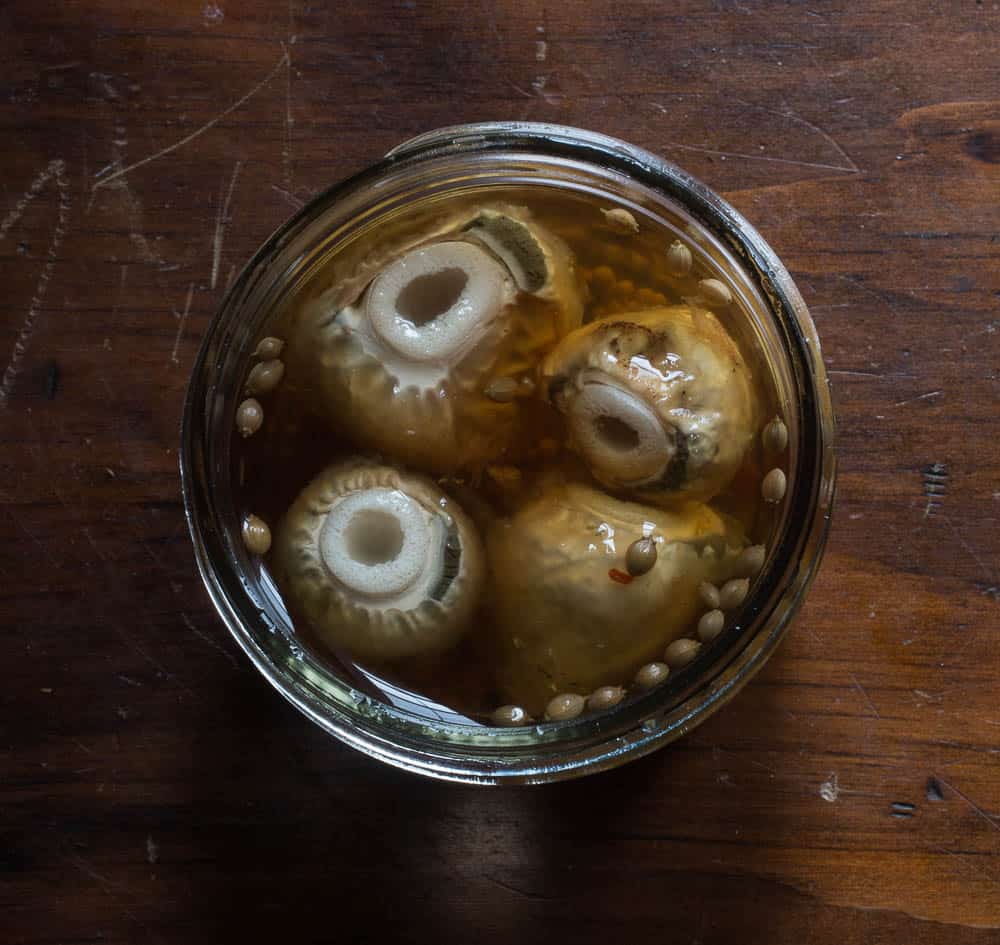
As for the taste? I remember crunching down on some, waiting for the aroma as I chewed. There was definitely a flavor, and not one like any mushroom I'd ever tasted before.
The overwhelming flavor of the egg itself was a musty scent, metallic almost, strong, it reminded me of something dusty or old even though I knew what I was eating was fresh.
On another note, the next day I literally choked down a solid three ounces after I ate the small egg the previous day to see if I had any G.I. issues with an increase in consumption.
They may tastes like old dust, but they were easy for me to digest, morels on the other hand still give me plenty of blurps and noise after I eat them.
Pickled Stinkhorn Eggs
To be fair to the stinkhorns, maybe each species tastes different, maybe some are really good, I may never know, and I might be ok with that. Even so, if you want to eat these, pickling will subdue some of the funky, musty scent, but not a lot of it.
Blanching in a couple changes of water could probably remove some more of the smell, but cooking something, anything in multiple changes of water to me has always seemed like a crime against nature.
After pickling and processing in a water bath to see how cooking affected their texture, I found it pretty interesting that the stinkhorn eggs weren't flavored by the pickling liquid, instead their smell had overtaken and overpowered it.
Stinkhorn eggs get to join the elite group of ingredients that become obnoxious after pickling, the only thing I can think of with a more powerful, intrusive smell is radishes. As for the texture, they stay oddly crunchy after cooking too, just like a water chestnut.
Just about every other thing I've eaten called a delicacy I have loved, but in stinkhorn eggs, I met my match I tell you. Eating them with other strong flavors could work I suppose, stir fry with some salty oyster or spicy chili sauce and a pile of cilantro maybe, maybe. Happy Halloween.
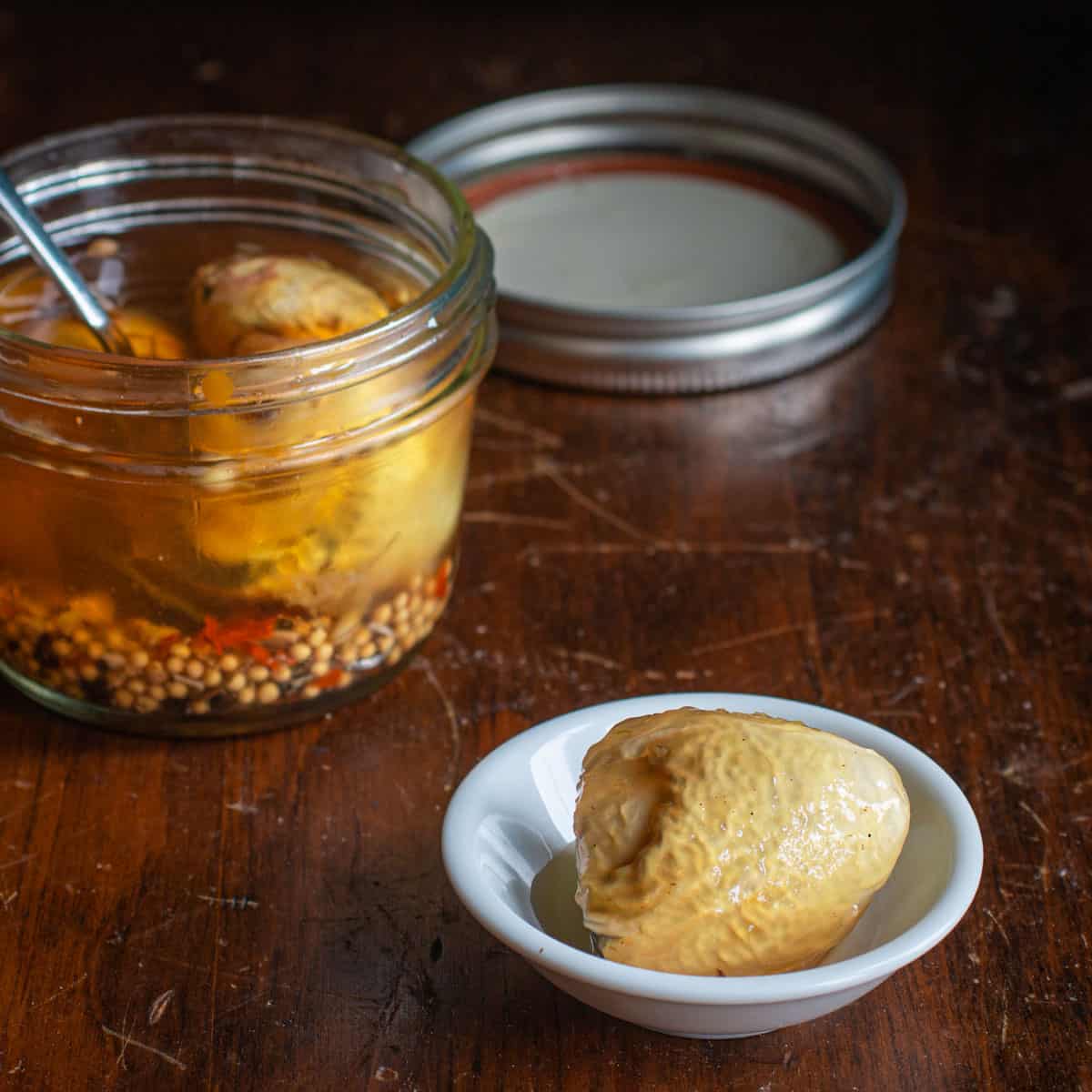

Davis
How can I tell during foraging if it's a poisonous variety of stinkhorn versus an edible kind? Been looking around for hours. What I have has a single "shaft", stinks, has dark spores, and flies like it.
I think it's phallus ravenelii. But I'm scared of killing myself with misidentification on the species level. The cross section of the egg is definitely jelly filled; it has all of the similar structures I've seen across phallus species online..
SP Jr.
Guys, Stinkhorn is one of the most potential medicinal mushroom in the world. Medicinal benefits are only in eggs. When mushroom mature, the only benefit that is left - wounds healing (using dried mushroom body soaked and applied to stop blood, disinfect and promote healing). But eggs are used as very potent anti inflammatory, anticancer, masculine potency enhancer,.. Gelly mass as cosmetics for various skin conditions.
Hunt it, plant it, use it.
Alan Bergo
This is a culinary website. Medicinal aspects of mushrooms have no place being discussed here and I will remove any further discussion of medicinal applications. That is a topic for a mushroom discussion group. Thx
Don
You are a boring idiot
Alan Bergo
Says some random mouth-breather not worthy of touching my paring knife.
Jdjdjd
NOPE NOPE NOPE. Kill it with fire.
Lynn Kennedy
31Dec2019: our company all tasted the StinkHorn Egg. I seared then in iron skillet no lettuce, but I did use garlic chili paste .We all agreed the taste was delicious and earthy, we did not like the slimely texture. We are going to try again with a coating and deep fry like we do for Okra. More information to come.
We really did like the flavor.
Lynn Kennedy
31Dec2019: our company all tasted the StinkHorn. I seared then in iron skillet no lettuce, but I did use garlic chili paste .We all agreed the taste was delicious and earthy, we did not like the slimely texture. We are going to try again with a coating and deep fry like we do for Okra. More information to come.
We really did like the flavor.
Lynn Kennedy
31Dec2019: I found a treasure trove of the eggs and plan to cook and taste them today. We are adventurous and plan to end 2019 in true Forager Fashion. I harvested only closed eggs. Plan is to hard sear and cook in butter with some peanut oil in of course cast iron. Serve with Garlic Chili paste on lettuce (like a wrap).
Alan Bergo
Thanks for sharing your experience! Keep me posted.
Gorden Russell
I was looking for info on identification of Orange Stinkhorn and was happy to find out it had medicinal uses.
Anna
Just savored one of these - will be seeking out more. Started with one slice, removing jelly etc. tasted good. Then tried with the jelly ( it didn’t smell bad) – sooooo good! . Reminded me of the squidge underlayer of crackling on roast belly pork – something I haven’t eaten for 30 years, being broadly vegetarian nowadays.
Jacqui
After the inspiration of reading your post I found a veritable flock of what I am quite sure is common stinkhorn (Phallus impudicus) eggs (and a couple of adults) in a flower bed on my university campus on my walk to work. Ate one raw and a few pan seared with my husband last night, then took a bag of them to my colleague whose birthday it was today in our tradition of odd birthday presents, and I peeled a couple and sliced them as a coffee room treat for anyone brave enough to try. Everybody who tried them (more then 10 people) really liked them, both raw and cooked. So perhaps Phallus pudicus is more pleasant/less offensive than Phallus hadriani? Or perhaps the French are more open to odd culinary experiences??
Alan Bergo
I can't speak to the difference of P. impudicus VS hadriani, but you're not the first person to echo that sentiment here. Especially after reading Alvaro's advice on trying to remove the immature gleba (and also the "watch them grow in the fridge experiment") I'll probably be trying them again.
davyd286
In MA, we have P.ravenelli, and the smell is pungent, but not bad at all, at least to me. I wash the eggs, take off the skin, cut them in half or quarters and eat them raw sprinkled with salt - they do taste like radishes. They're good in a tossed salad, too - with balsamic vinegar.
Alan Bergo
I'll have to try those. Thanks!
Lori
If you can't make these taste good, I certainly have no chance.
Cross that one off of the list of oddities to try, not that it was actually ever on the list. At least not my list.
Sam Schaperow
It is personal preference. Even if not drying them 1st, some people find their very strong flavor to be tasty (I personally know such people).
Alvaro
Thanks for sharing your experiments in the kitchen. Your pictures look amazing! I would not leave any jelly for best results. Additionally, the green bits are the the immature gleba, which later join together with the jelly and becomes that green slime in the cap that stinks like mad, so perhaps that's why you cannot get rid of the smell. I always leave just the central core, which as you say, have a crunchy bite like water chestnuts. I have recently posted about that in my blog: http://britishlocalfood.com/stinkhorn/
Alan Bergo
Thanks Alvaro, that's some great information. The only bad part is now I'm left feeling like I didn't do them justice and need to try just the core! Next year.
Dan
Thanks for taking this one for the team, Alan. You have no idea how much your sacrifice is appreciated.
Sam
Yep, I've eaten them as eggs and non-eggs. They sell dried ones in some Asian grocery stores. Sichuan cuisine has a soup made w/stinkhorns (full-sized, not eggs).
Nancy elder
Thank you for your service
Carla Beaudet
You're braver than I am. Several years ago, I found one of these peeking out from under pine needles, sliced it in half, took a whiff, thought "that smells slightly toxic" and left it in the woods. Despite the olive-brown spore mass, I believe I was wondering whether it could be an Amanita egg, but I returned a few days later, following a rain, to find some beautiful (and stinky, in an almost completely different way than the egg) netted stinkhorns; even the egg I'd sliced in half had tried to emerge. Never, never, considered eating it, though, nor finding out whether it was edible. Following your glowing review of the experience, I think I'll decline. Thanks for checking it out, though.